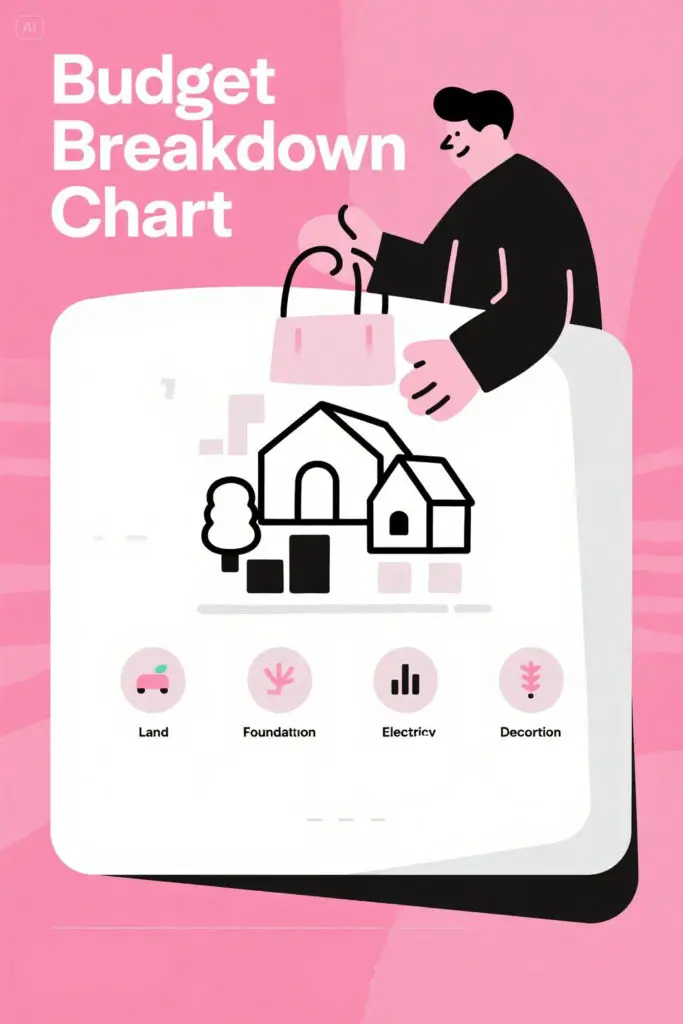Building a house is one of the most exciting and emotional journeys in a person’s life because it’s not just about putting walls and roof together, it is about creating a safe space for yourself and your family where memories will be created and cherished. However, along with the excitement and fun, comes the responsibility of managing finances. Many people, without a budgeting plan, only come to realize that costs add up quickly, unexpected expenses show up when you least expect them, and soon your dream home can become a financial burden. The good news is that with the right budgeting strategies, you can keep your finances under control, make smarter decisions, and still end up with a home you love. This article will help you explore ten budgeting tips that will help you manage your money wisely while building your house, so the process feels less stressful and more rewarding.
1. Set a Realistic Overall Budget
The first and most important budgeting tip when it comes to creating your home is to decide exactly how much you can afford to spend on your house without putting yourself into a financially overwhelming situation. Many people underestimate the total cost of construction, forget to include things like permits, utility hookups, and finishing touches, and while these may seem small, they can eat away a large chunk of your budget.
By setting a realistic number from the very beginning, including the hidden costs as well, you can give yourself clear boundaries and clarity, helping you make smarter decisions and stay in control of your spendings throughout the building process.
2. Break Down the Costs into Categories

After setting your overall budget, the next step is to divide your budget into sections such as land, foundation, structure, plumbing, electrical work, interiors, and finishing touches, and don’t forget small but important things like permits or landscaping.
When you see each category separately, it becomes easier to decide where to spend more and where to cut back if needed. For example, you might want to invest more in the kitchen or bathroom, which add long-term value, and save a little on flooring or decorative features that can be updated later.
3. Choose the Right Location Within Your Means
It is often said that location is everything in real estate, and while that is true to some extent, it is also one of the biggest factors in your budget. Land in popular areas can cost far more than you may realize, eating up a huge portion of your budget before you even begin building your dream home.
Instead of stretching your finances too thin, try looking for locations that balance affordability with long-term value. You can look for a slightly less expensive neighborhood that allows you to build a bigger or better-quality house within the same budget. What matters the most in the end is the fact that you create a comfortable space for your loved ones, a home you can afford to maintain as well.
4. Plan for Hidden and Unexpected Costs

No matter how carefully you plan for all the expenses, some expenses will catch you by surprise, whether it’s soil that needs extra preparation, sudden price increases in materials, or small design changes that cost more than expected. To deal with these surprises, you can keep at least ten to fifteen percent of your budget aside as a safety net, so that whenever these expenses show up you can pay for them without having to stretch your budget.
Not only does this safety net save you from last-minute spendings, it also allows you to handle unforeseen situations without panicking or stressing over them.
5. Be Smart About Design Choices
When building a home, it is easy to get carried away with luxurious designs or big ideas, but it is crucial to understand that every extra feature increases the cost. Being smart about designs is less about giving up on beauty and more about making choices that bring value to your hard earned money.
For example, a simple and minimalist floor plan is often cheaper to build and easier to maintain as compared to a complex layout with unnecessary spaces that costs a lot. The key is to focus on the functionality of your choices and then align the cost of the design with your wallet, striking the perfect balance between aesthetics and being mindful with your spendings.
6. Get Multiple Quotes from Contractors
When it comes to construction, one of the most common mistakes people make is that they choose the very first contractor they meet without exploring other options. Prices can vary more than you may realize, for instance, a contractor may offer a higher estimate, and another contractor may offer you the same service but at a much more reasonable price.
This is why it’s always important to get at least three different estimates from different contractors before making the final decision, so you can compare not only the prices but also what is included in the services.
Moreover, sometimes a cheaper option may not cover everything, while another contractor who seems slightly more expensive might include additional work or better materials and actually save you money in the long run.
7. Track Expenses Closely Throughout the Project
Setting a budget in the beginning is only half the work, because what really matters is how well you stick to it once the construction starts. Building a house moves fast, and if you’re not keeping track, small costs can pile up quickly without you realizing it, and this is why it helps to note down every expense as it happens, whether you use a simple notebook, a spreadsheet, or even a budgeting app on your phone.
By comparing what you planned to spend with what you are actually spending, you can immediately spot areas where you’re going over budget and make small adjustments before the situation gets out of hand.
8. Avoid Constant Changes Once Work Has Begun
It’s all too tempting to come up with new ideas or design changes while your house is being built, but each time you change something once work has begun, it often comes at additional cost and delays. Small deviations like moving a wall just a bit or opting for a new style of flooring at the last minute can set off a series of additional labor and waste that will push your budget past its breaking point.
This doesn’t mean you can’t make changes at all, only that you should try to nail down your decisions before construction begins because the more closely you stick to the original plan, the easier and cheaper everything will be overall.
9. Balance Quality and Affordability
When building a house, it can be tempting to save money by picking the cheapest materials everywhere, but the truth is that extremely low-quality choices often don’t last long and end up costing you even more later because of repairs or replacements.
On the other hand, going for the most expensive option in every corner of the house can easily eat away most of your budget. The best way to deal with this is to strike a balance between quality and affordability by spending more on the important parts of the house that affect safety and durability, like the foundation, roofing, or plumbing, while being more budget-friendly in areas that can be updated more easily in the future, such as wall paint or decorative items.
10. Keep Lifestyle Costs in Mind After Moving In
A lot of people only think about the cost of building the house and forget about how much it will cost to actually live in it once it’s finished. If your home is too large, or has features that require high maintenance, you may find yourself paying more in electricity, water, cleaning, and repairs than you expected, that’s why it’s important to plan ahead and think about your lifestyle when budgeting.
A beautiful home that constantly drains your income can quickly become stressful, while a well-planned home that matches your lifestyle will bring you comfort and peace for years to come.
Conclusion
Building your dream house is a journey filled with excitement, hope, and vision for the future, but it is also a process that tests your ability to manage money wisely. Without a clear plan, costs can go out of control, turning what should be a joyful experience into a stressful one. However, by following simple budgeting strategies you can stay ahead and avoid unnecessary struggles. From setting a realistic budget to making smart design choices, each tip plays a part in keeping your finances steady. The goal is not just to build a house, but to create a home that feels right for you and your loved ones, and a place you can enjoy without worrying about overwhelming debt. With patience, planning, and mindful decisions, your dream home can be built in a way that is not only beautiful but also financially sustainable, giving you true peace of mind.
